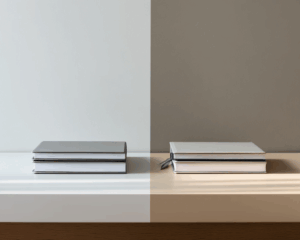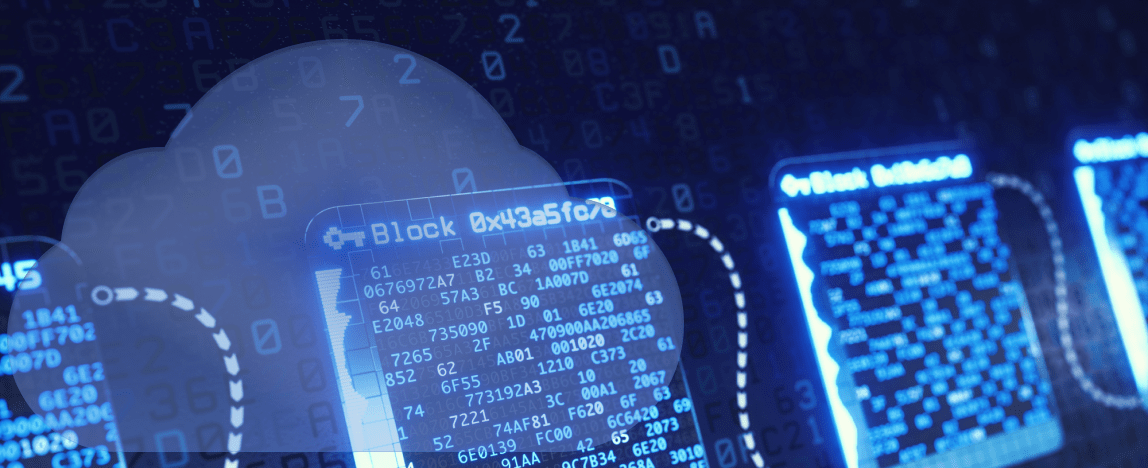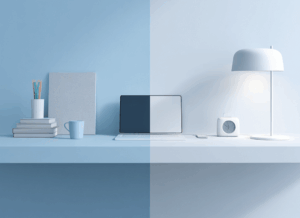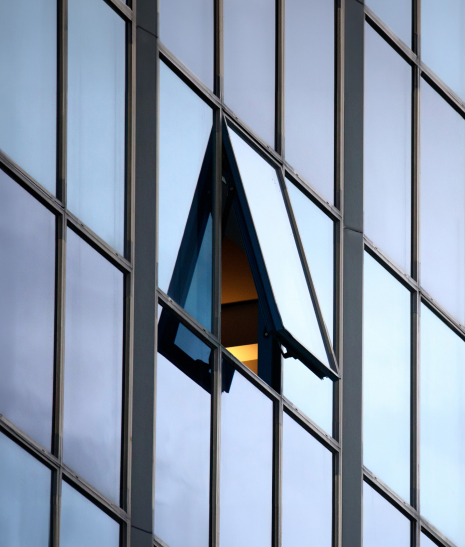

What is the first association for the “blockchain” that comes to people’s minds? With high probability, it would be “cryptocurrency.” No wonder, as initially, it was the Bitcoin network that showed the real power of this technology to the whole world.
Does it mean the blockchain could only be used in the financial sphere? Definitely, not. The world community has found many ways to apply this technology, including banking, investing, real estate, and many others.
In this article, we’ll get an inside look into how blockchain is connected with virtual data rooms and M&A processes. However, before going any further, let’s clarify what blockchain is and how this technology works.
What is blockchain technology?
Simply put, it is a specific type of distributed database or a digital ledger of transactions. It provides the opportunity to record and transfer data, remaining safe, transparent, and resistant to any corruption.
What makes it so unique is the way it stores the information and shares it among users. Thanks to that, blockchain is the most transparent technology for recording transactions.
What differentiates blockchain from a traditional database?
- Its structure. A blockchain stores information in the form of interconnected “blocks” — creating a chain.
- Decentralization. All the data is shared among a network of computers to verify it is identical and secure.
- Cryptography. No users have a chance to change or delete any blocks of information as it is secured.
- Transparency. Each user could track the transactions with the help of their personal nodes or blockchain explorers.
- No third parties. In contrast to virtual data rooms, blockchain requests no “middlemen” to verify its transactions.
How does blockchain work?
When a new transaction takes place, it appears in the form of a block creating copies on each network computer. Every block contains valuable data and a “hash” — its unique set of characters. Chaining to another block, it shares its hash, and this is what makes blockchain so secure and immutable.
Making a transaction creates a new block immediately, sending copies to all computers on the network. Then, each node verifies that the block hasn’t been tampered with so everyone can add it to their chain of blocks.
The benefits of blockchain data center integration
During the last decade, data centers are emerging due to the ever-growing number of customers and their sensitive data. The larger the amount of information means stricter demands for its security. Due to strengthening their abilities, data centers apply blockchain technology to their virtual data rooms. Such integration gives them considerable benefits:
Skyrocketing transparency
As a data center is a complex system, it lowers the percent of understanding its processes and, therefore, trustworthiness. Applying blockchain technology allows easy tracking and storing of all the necessary information about the health of networks.
To increase transparency even more, businesses have a choice to make it public, so their customers have a clear vision of their work. Even remaining private, the system is still absolutely transparent to its permitted participants.
Bank-grade level of security
Hackers, invalid transactions, corrupted information, and interfering in your sensitive data — a blockchain data room virtually eliminates these concerns.
The combination of cryptography technology and data distributed worldwide guarantees the companies a level of security they have never experienced. Despite initially blockchain technology being created for financial needs, it could safely transfer any digital assets these days.
Enhanced capacity planning
The current amount of user demands is nothing compared to what is about to appear in the IoT era. A constantly growing number of users with their multiple devices and 5G network demand a new level of transaction speed.
Smart contracts, scripts on blockchain data room features conveniently come in handy at this phase by foreseeing demands and managing workloads. This benefit helps data centers to keep pace with the changing reality.
How does blockchain technology improve the security of data rooms?
Providing millions of transactions each year, the biggest demand for virtual data rooms is security. While the traditional authorized system is highly vulnerable to hacker attacks and corruption attempts, blockchain technology guarantees to transfer all the digital assets in a non-modified and permanent way and significantly improve online data room security.
There are three well-known characteristics of this technology that makes it a game-changer in the data era:
- a decentralized system of sharing information
- cryptographed security of each block
- a chronological way of storing the data
Combining all these features ensures the safety of any transactions made in the blockchain virtual data room. Having each step available, every stakeholder has the opportunity to verify it instantly due to the peer-to-peer system.
However, such significant benefits have their price. Applying blockchain technology, data centers have to be ready for the lower speed of the transactions. This is because blockchain requires additional actions verifying the consensus and using cryptography.
Blockchain and virtual data room
A recent study by “Research and Markets” forecasts that the market of virtual data rooms is to reach $2.6 billion by 2025. What is the reason for such growth? The hyper-connected world, where businesses are willing to collaborate much beyond usual borders.
However, what goes along with such considerable growth is the increased pressure. In data rooms, you have to pay attention to how safely they store and transfer the data. This is why currently, more and more companies are choosing blockchain technology.
What concerns about blockchain should virtual data rooms be aware of?
- Lower transaction speed
As mentioned earlier, the need for more time to provide the transaction is the price data centers pay for a new level of data security and transparency. Due to the peculiarities of blockchain technology, it also demands computing power for cryptographic calculations.
- Structure changes
Currently, data centers have a form of centralized services, which is the opposite of blockchain technology. Due to that, the architecture of the blockchain data room must be changed from a 3-level network structure to a 2-level spine-and-leaf network structure.
How could blockchain technology impact the M&A process?
The fact that blockchain is a game-changer in many spheres isn’t front-page news — those involved with M&A processes are all too familiar. Since it requires multiple complex steps and a long time, blockchain can significantly improve all its processes.
- Immutable confidential data
The main feature that makes blockchain a revolutionizing technology is the integrity of all digital assets it transacts. Being sure all the data is verified is one of the most critical aspects of the M&A process. Transparency of each step and the ability to check the chronological history nullifies the probability of post-transaction conflicts.
- Minimized disintermediation costs
Concluding the agreement is the final point of the M&A process, which demands a high level of guarantee. To provide that, businesses pay bank or notarial fees. Instead, blockchain technology replaces the need for trusted third parties with its smart contracts to reduce companies’ spending.
The future of blockchain technology in terms of virtual data rooms
The question of blockchain’s future is on everyone’s mind. Data center and M&A-process experts are actively discussing this technology and continually adding it to the list of upcoming digital trends.
Does blockchain have the potential to change most, if not all, the spheres of the world we know? Definitely. Does the world community know how to implement it successfully? Doubtful. What is evident to all of us is that we’re entering a new digital era, and blockchain is making its mark.
References
- Luke Conway. “Blockchain Explained”. 2020. Investopedia. https://www.investopedia.com/terms/b/blockchain.asp
- Jun 14, 2019. “What is Blockchain Data Center Integration?” by Kaylie Gyarmathy. https://www.vxchnge.com/blog/relationship-between-blockchain-data-centers
- Research and Markets. “Virtual Data Rooms Market Outlook, 2025 – Combination of Blockchain with Virtual Data Rooms to Offer Unprecedented Data Security”. 2020. Intrado GlobeNewswire. https://www.globenewswire.com/news-release/2020/03/31/2009044/0/en/Virtual-Data-Rooms-Market-Outlook-2025-Combination-of-Blockchain-with-Virtual-Data-Rooms-to-Offer-Unprecedented-Data-Security.html
- Aug, 2020. “The Successes and Failures of Blockchain in the Data Center” by Christopher Tozzi. Data Center Knowledge. https://www.datacenterknowledge.com/colocation/successes-and-failures-blockchain-data-center
- “The Future Of Blockchain And Data Center Integration”. 2021. HostDime Blog. https://www.hostdime.com/blog/blockchain-data-center/
- 2019. “New Data Center Architecture at the Edge is Needed to Support Blockchain” by Steven Carlini. Schneider Electric Blog. https://www.google.com.ua/amp/s/blog.se.com/datacenter/2019/08/21/new-data-center-architecture-at-the-edge-is-needed-to-support-blockchain/amp/
- “How blockchain technology is transforming the data centre infrastructure”. 2019. Telehouse. https://www.telehouse.net/blog/how-blockchain-technology-is-transforming-the-data-centre-infrastructure/
- “Blockchain & the Cloud: Transforming Data Center Architecture for Tomorrow”. https://www.dotmagazine.online/_Resources/Persistent/fc8cc48f4cd791148ac7d8c1c1404528ff779174/Corning%20Paper%20Blockchain%20and%20the%20Cloud.pdf
- “The application of blockchain technology through M&A process” by Nicolas Klukowski. http://bpcc.org.pl/contact-magazine/issues/31/categories/145/articles/864
- 2020. “How Blockchain Tech Could Make Mergers And Acquisitions More Efficient” by Luis Colasante. https://www.linkedin.com/pulse/how-blockchain-tech-could-make-mergers-acquisitions-more-colasante?articleId=6653944601990299648
Recommended for you


